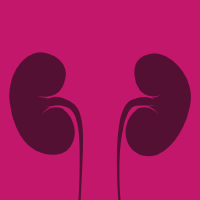Topic Menu
► Topic MenuTopic Editors

2. Grenoble-Alps University Hospital, 38043 Grenoble, France

Nitrative and Oxidative Stress in Cell Death and Human Diseases
Topic Information
Dear Colleagues,
Reactive species include several molecules produced not only under pathological situations but also during physiological cellular metabolism, where they are involved in regulating the activity of many key enzymes. Excessive generation of these species can elicit an intracellular state known as oxidative stress, where cellular antioxidant systems are no longer able to maintain physiological redox homeostasis. The term “oxidative stress” is, however, often used in an inappropriate manner as the primary target of the initial oxidative radical, superoxide, is nitric oxide, which, being in large excess, acts as a “buffer”, yielding reactive nitrogen species. It is only once the superoxide fluxes exceed the nitric oxide fluxes that true “oxidative stress” occurs. Nitro-oxidative stress is therefore a more appropriate term that takes into account the evolving generation of reactive nitrogen and oxygen species and their effects on cell and organ pathophysiology. One of the potential deleterious consequences of nitro-oxidative stress is the occurrence of DNA mutations as well as the generation of toxic oxidized macromolecules such as (per)oxidized lipids and carbonylated proteins. These phenomena can lead to cell death or, worse, to uncontrolled proliferation and cancer. Nitro-oxidative stress has thus been shown to be involved in a great number of pathologies, particularly those associated with low- or high-grade inflammation as well as cancer. The understanding of the biochemical mechanisms of its generation and of its pathophysiological consequences is therefore crucial for the development of novel therapeutic strategies, some of which have recently emerged. Accordingly, the discovery of naturally occurring antioxidants, especially in food, may open new perspectives in preventive medicine. This Topic, entitled “Oxidative Stress in Cell Death and Human Diseases”, aims to cover the more recent advances and insights into the research in these different areas, ranging from biochemistry to pathophysiology and aimed at developing novel health and medical applications. We look forward to receiving your contributions.
Prof. Dr. Serge P. Bottari
Dr. Maria Elena Giordano
Topic Editors
Keywords
- oxidative stress
- nitro-oxidative stress
- reactive oxygen species
- reactive nitrogen species
- redox signaling
- cell death
- apoptosis
- necrosis
- autophagy
- mitochondria
- oxidative phosphorylation
- mitochondrial permeability transition
- antioxidants
- bioactive compounds
- human disease
- inflammatory diseases
- metabolic diseases
- cardiovascular diseases
- neurodegenerative diseases
- respiratory tract diseases
- eclampsia
- cancer
- toxicology
- pollution
Participating Journals
| Journal Name | Impact Factor | CiteScore | Launched Year | First Decision (median) | APC |
|---|---|---|---|---|---|

Antioxidants
|
7.0 | 8.8 | 2012 | 13.9 Days | CHF 2900 |

Cells
|
6.0 | 9.0 | 2012 | 16.6 Days | CHF 2700 |

International Journal of Molecular Sciences
|
5.6 | 7.8 | 2000 | 16.3 Days | CHF 2900 |

Kidney and Dialysis
|
- | - | 2021 | 19.1 Days | CHF 1000 |

Oxygen
|
- | - | 2021 | 22.7 Days | CHF 1000 |

MDPI Topics is cooperating with Preprints.org and has built a direct connection between MDPI journals and Preprints.org. Authors are encouraged to enjoy the benefits by posting a preprint at Preprints.org prior to publication:
- Immediately share your ideas ahead of publication and establish your research priority;
- Protect your idea from being stolen with this time-stamped preprint article;
- Enhance the exposure and impact of your research;
- Receive feedback from your peers in advance;
- Have it indexed in Web of Science (Preprint Citation Index), Google Scholar, Crossref, SHARE, PrePubMed, Scilit and Europe PMC.

